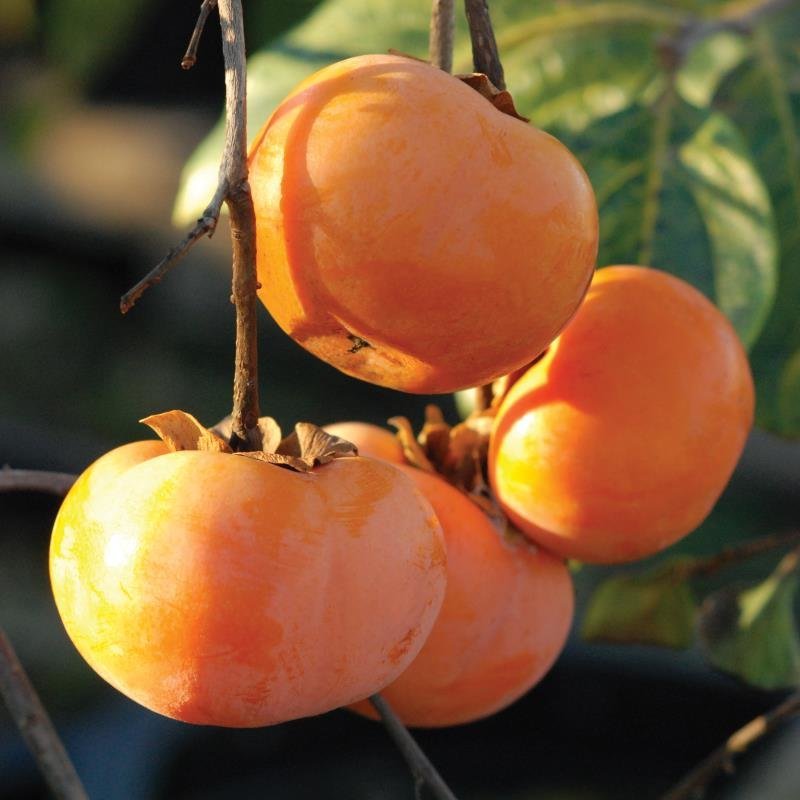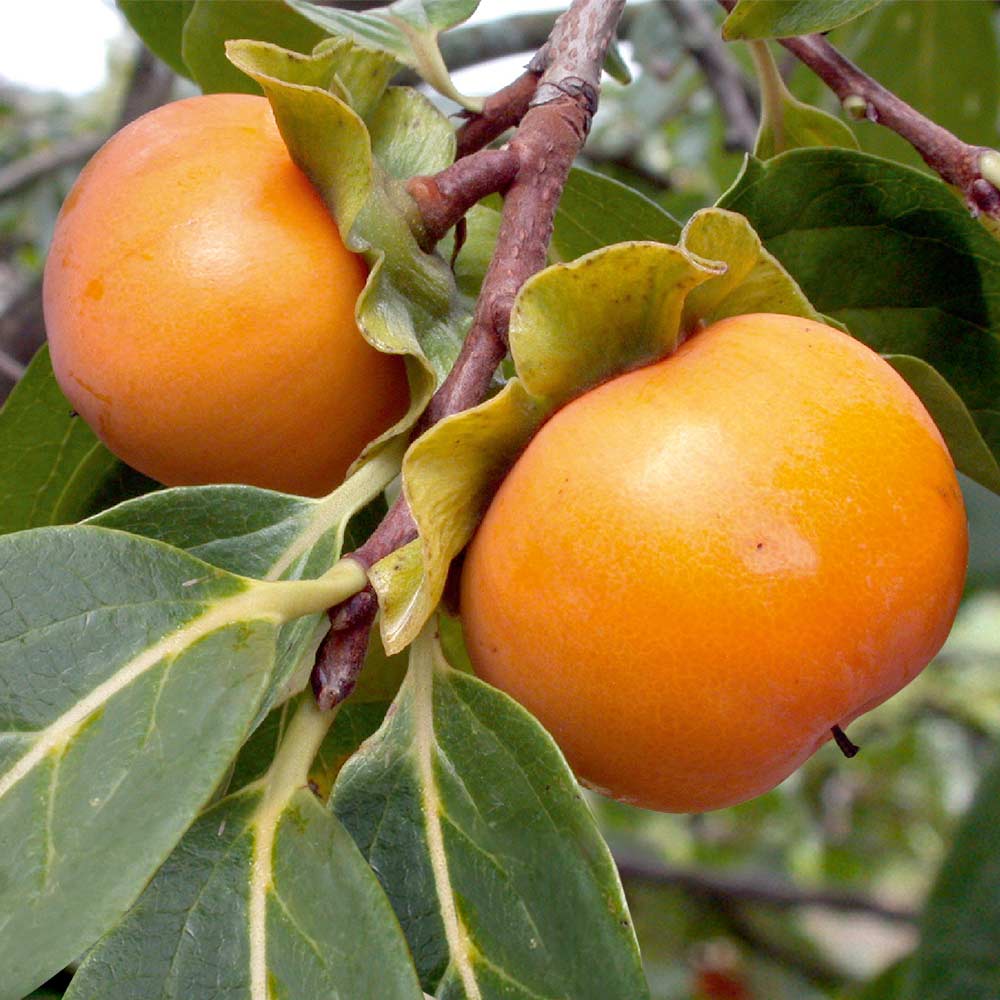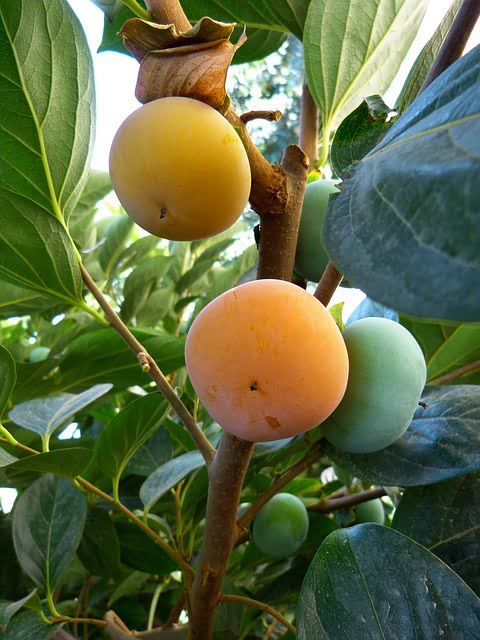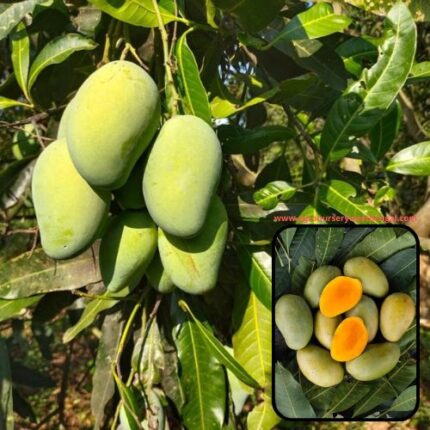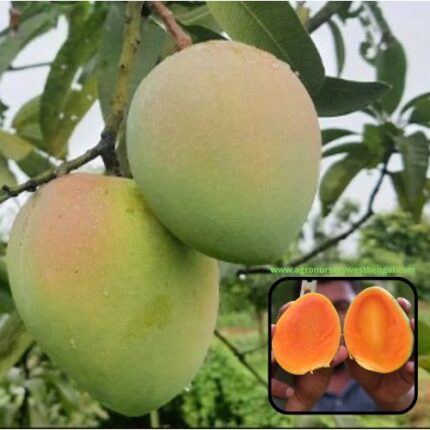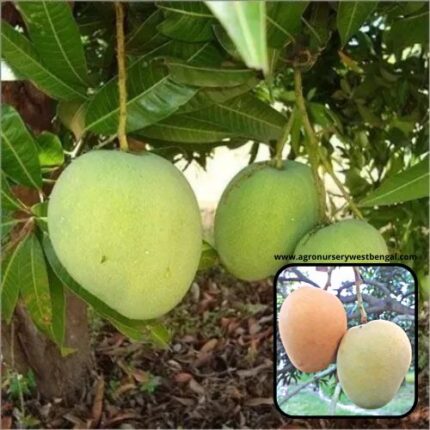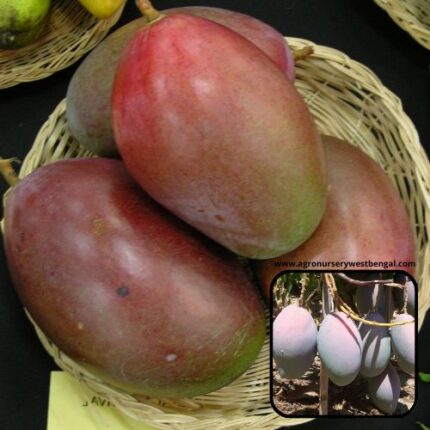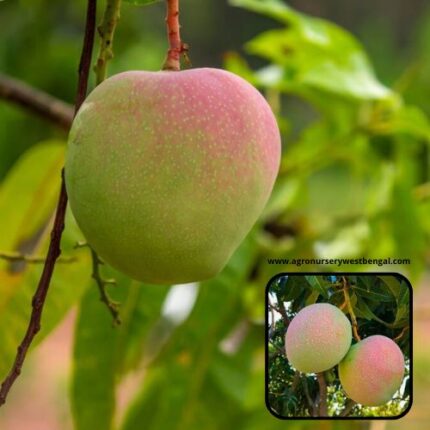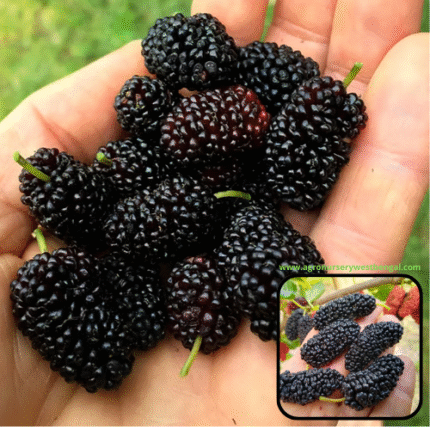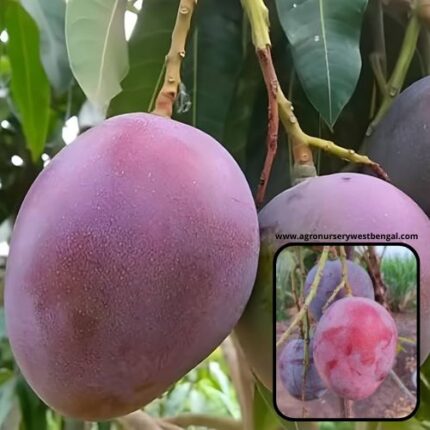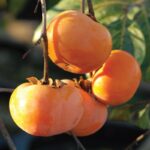
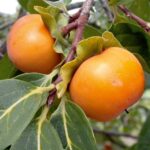
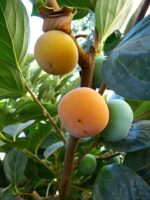
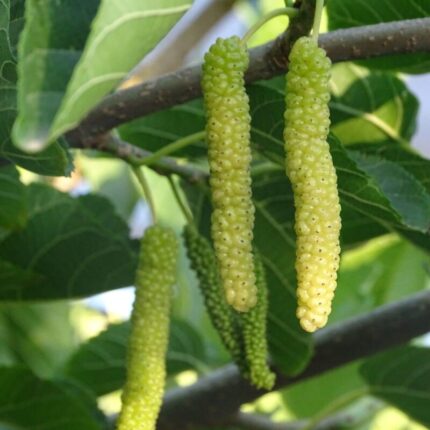
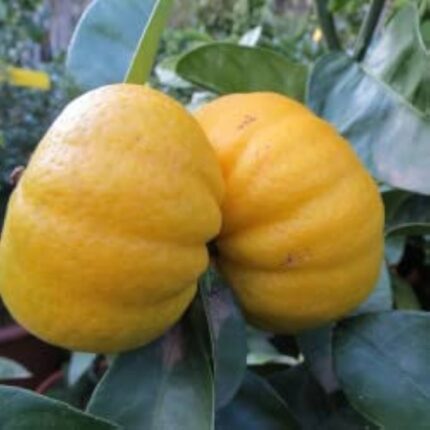
Persimmon fruit plants
₹1,499 Original price was: ₹1,499.₹799Current price is: ₹799.
Persimmon is a unique and wonderfully diverse fruit, often called the “Fruit of the Gods” (from its botanical genus name, Diospyros). It’s most commonly associated with Asian varieties (Diospyros kaki, also known as Oriental, Chinese, or Japanese persimmon or Kaki fruit) and American varieties (Diospyros virginiana). The key to enjoying a persimmon is understanding its type and ripeness.
1. The Fruit (General Characteristics):
- Appearance: Persimmons typically range in size from small (like American persimmons) to medium-large (like many Asian varieties). They are often round, oval, or heart-shaped, and display beautiful vibrant colors, ranging from bright orange to reddish-orange or even deep red when ripe. A persistent, leafy calyx (the green cap on top) remains attached to the fruit.
- Flesh: The flesh can be soft, jelly-like, and translucent when fully ripe, or firm and crisp depending on the variety. The color of the flesh can range from pale yellow-orange to a darker brown-orange.
- Seeds: Most varieties contain a few large, flat, dark brown, inedible seeds, though some cultivars are seedless (parthenocarpic).
- Season: Persimmons are a quintessential autumn and early winter fruit, often ripening as the leaves fall from the trees.
2. Key Types of Persimmons:
The most crucial distinction when describing persimmons is between astringent and non-astringent varieties:
-
Astringent Persimmons:
- Examples: Hachiya (most common teardrop/acorn-shaped variety), American Persimmon (Diospyros virginiana).
- Characteristic: These fruits contain high levels of soluble tannins when firm and unripe. If eaten before fully ripe, they cause an intense, unpleasant puckering, drying, and bitter sensation in the mouth (astringency). It literally feels like your mouth is being vacuum-sealed.
- Ripeness for Eating: Astringent persimmons must be completely soft, almost jelly-like or mushy, to be enjoyable. At this stage, the tannins become insoluble, and the fruit transforms into a wonderfully sweet, honey-like, sometimes spicy, rich, and often jelly-like pulp. The skin may even appear slightly wrinkled or translucent.
- Uses: Best eaten fresh with a spoon once fully ripe. Their soft, pudding-like consistency also makes them ideal for baking (muffins, breads, puddings) or adding to smoothies.
-
Non-Astringent Persimmons:
- Examples: Fuyu (most common, squat, tomato-shaped), Jiro, Sharon fruit (a treated astringent variety, often marketed as non-astringent).
- Characteristic: These varieties have much lower levels of soluble tannins, or their tannins become insoluble much earlier in the ripening process. Therefore, they can be eaten when firm and crisp, similar to an apple.
- Ripeness for Eating: They are ready to eat when they develop their full orange color and feel firm to slightly soft. They offer a mild, sweet flavor, often described as similar to a pear, brown sugar, or cantaloupe, with a crisp, juicy texture.
- Uses: Excellent for fresh eating (sliced like an apple), in salads, with cheese, or even lightly cooked in stir-fries. They also work well in baking.
3. Taste and Texture (General):
- Ripe Astringent: Extremely sweet, rich, honey-like, sometimes with a hint of spice or apricot. Texture is soft, creamy, and jelly-like, melting in your mouth.
- Ripe Non-Astringent: Mildly sweet, refreshing, often compared to pear, cantaloupe, or a mild apple. Texture is crisp, firm, and juicy, with a pleasant crunch from the tiny seeds.
4. The Plant (Tree):
- Type: Persimmon trees are typically deciduous, meaning they lose their leaves in the fall. They are often quite ornamental, with beautiful orange-red fruit hanging on bare branches after the leaves have dropped.
- Height: Can range from medium-sized shrubs to large trees, often 10-25 feet (3-8 meters) tall, but some American persimmons can reach up to 80 feet.
- Leaves: Broad, simple, alternate leaves that turn beautiful shades of yellow, orange, and red in autumn.
- Flowers: Small, inconspicuous, yellowish-white flowers appear in spring (or fall for some varieties). Many persimmon trees are dioecious (separate male and female trees are needed for fruit production), though some cultivars are self-fertile or can produce seedless fruit without pollination.
- Hardiness: Adaptable to a wide range of climates from temperate to subtropical. They prefer full sun and well-drained soil.
5. Nutritional Value and Health Benefits:
Persimmons are a nutritional powerhouse:
- High in Vitamins: Excellent source of Vitamin A (beta-carotene), crucial for vision, skin health, and immune function. Good source of Vitamin C (antioxidant, immunity). Also contains some B vitamins (like B6), Vitamin E, and Vitamin K.
- Rich in Fiber: High in dietary fiber, which aids digestion, promotes bowel regularity, and can help manage blood sugar and cholesterol levels.
- Abundant in Antioxidants: Contains a wide array of powerful antioxidants, including carotenoids (responsible for the orange color), flavonoids (quercetin, kaempferol), and phenolic compounds. These help combat free radicals, reduce inflammation, and may lower the risk of chronic diseases like heart disease and certain cancers.
- Minerals: Provides potassium (for blood pressure), manganese (for bone health), copper, and some calcium, phosphorus, and iron.
- Low in Calories: A relatively low-calorie fruit, making it a healthy snack option.
In summary, persimmons are a diverse and incredibly flavorful fruit that can be enjoyed in various ways, provided you understand the crucial difference between astringent and non-astringent types and ensure proper ripeness for an optimal eating experience

